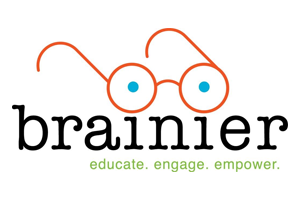As more companies around the world adopt virtual reality (VR)-based immersive learning, they’re discovering how this technology can improve collaboration, productivity and performance of employees. A Meta study found that 70% of workers see the metaverse as a driver for global hiring, and a majority of businesses want to see VR headsets introduced as soon as possible.
The successful adoption of immersive learning is not a one-size-fits-all endeavor. It requires planning and a strategic shift from merely generating content to crafting a measurable education strategy, from initial hiring to ongoing training and upskilling initiatives.
Outlined below are seven fundamental steps that organizations should consider for the seamless deployment and continuous enhancement of Immersive Learning experiences.
Step 1: Strategy Development
The journey toward successful immersive learning begins by heeding the wisdom of “beginning with the end in mind,” as articulated in “The 7 Habits of Highly Effective People.”
The first step involves defining success metrics, outlining key behaviors, and identifying business objectives and scenarios that the program will address. For instance, if the objective is to improve warehouse safety, a strategy might involve creating a virtual environment to test employees’ hazard recognition skills. With a traditional approach, an employee may list off problems they see in a sample screenshot or illustration. But unless they have the ability to look up and around, they may never notice that a burnt out light bulb is creating a dangerous situation.
Develop a framework document that outlines business objectives, key learner audiences, the current training approach, and how immersive learning could convey this situation in a more realistic manner. In my example above, the strategic goals are improving object recognition, spatial awareness and decision-making. The evidence of success will come by measuring warehouse safety issues over time.
Step 2: Curriculum Design
The collaborative effort of curriculum design is a pivotal phase that involves working with immersive instructional designers, line managers, employees and other stakeholders. The aim is to create a curriculum rooted in active learning principles. Grading should focus on the learners’ ability to make the right decisions within the immersive environment, fostering engagement and knowledge retention.
VR training often takes place in the same place where learners actually work, such as a factory floor or retail store. Learning in the same environment as one’s work environment helps make training more relevant and memorable. Design a curriculum based on the principle of active learning, or “learning by doing.” Define the relevant data points that will demonstrate positive results and remember that immersive learning relies on more than multiple choice quizzes or paper assessments. Employees need to be graded on their ability to make the right decisions in the environment.
Finally, create the script and shot list for the production film shoot. Some companies may consider bringing in an immersive content specialist (ICS) with experience in filmmaking and spatial design to help carry the project forward.
Step 3: Content Production
The ICS has a role that’s analogous to a film director, as they guide the entire production process. Filming with 360-degree cameras on location, the ICS ensures a realistic and immersive experience that resonates with learners. Scripting, shot lists, and post-production editing contribute to a cohesive and natural flow during training.
VR training encourages employees to walk through the environment and discover different training in the virtual world. Camera placement and actor direction is crucial, with visual and auditory cues helping guide the student on where to direct their attention, where to move in the environment, and what sort of interactions to have.
Step 4: Experience Creation
This step involves combining captured footage with an authoring tool and a VR software platform to create interactive training modules. Interactive elements cover both lessons and activities. Lessons convey the information learners need to know, from a virtual coach or voiceover while learners explore a virtual branch office or warehouse. Activities usually follow the lessons and assess learners on what they’ve learned while capturing performance metrics. Activities can also bookend a training session, so a company can evaluate skills before and after the lesson to track the change in behavior.
Step 5: Physical Setup
Once the content is ready, multiple teams collaborate across locations to execute the rollout. Coordination is crucial to ensure an adequate supply of VR headsets and training equipment. Designating a specific area for immersive learning, complete with secure storage for headsets, ensures cleanliness and readiness for employee use.
Step 6: Rollout and Adoption
The excitement of launch day is often kicked off with a “train the trainer” session, facilitating smooth adoption and rollout to the broader employee base. Facilitators are acquainted with setup and logistical considerations for headsets. Once people are experiencing a VR environment, the excitement and realism of the experience can sweep through the room, so take care of the housekeeping first around setup and Q&A before everyone puts on their headsets and dives into the experience.
Step 7: Performance Analysis
Post-implementation, continuous monitoring is vital for gauging impact and results. A VR learning platform captures data on movements, interactions, and performance, allowing organizations to assess the program’s value. This iterative process enables adjustments and refinements to lessons, ensuring continuous improvement over time.
Using this performance data, companies can demonstrate the impact of a VR training program, and monitor how widely the platform is being adopted, if learners are progressing through the program as expected, or if there are particular areas to refine.
Using VR Data Insights
By embracing immersive learning and leveraging the valuable insights, companies can make better business decisions about their staff. With more data on how workers perform in routine or unusual situations inside a VR headset, companies can assess skills and train better, provide an objective benchmark on who to offer additional training to, and capitalize on upskilling opportunities for strong performers to prepare for the jobs of the future.








